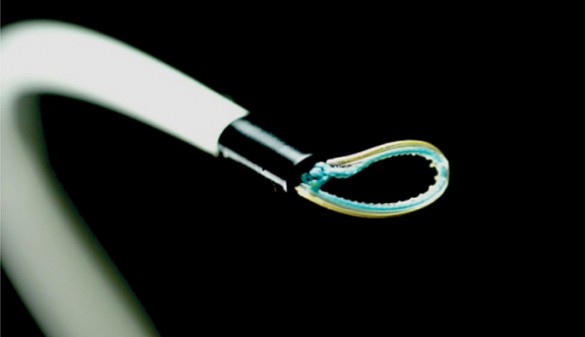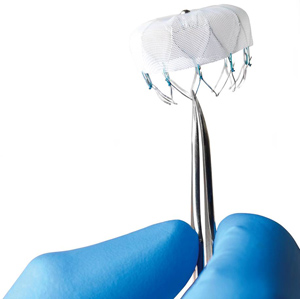
People with the most common irregular heart rhythm known as atrial fibrillation (AF) are at greater risk for stroke due to the formation of clots in the left atrial appendage (LAA), a small pouch which empties blood into the left atrium.
For many years, cardiac surgeons closed off the appendage while performing cardiac bypass surgery or heart valve replacement, both of which required open heart surgery.
They would use traditional sutures or staples to close the appendage, but often blood would continue to seep into the left atrium.

Christopher Ellis, M.D., recently performed Vanderbilt Heart’s first percutaneous left atrial appendage closure with the LARIAT suture delivery system, which does not involve opening the chest, and permanently seals the opening, cutting off blood flow. Marshall Crenshaw, M.D., assisted Ellis using the minimally invasive approach on four patients ranging in age from 70 to 83.
The risk of stroke is five times higher in patients with AF than in those without AF, Ellis said. Typically, one’s stroke risk is managed by an oral anticoagulant, such as Coumadin, which can cause serious bleeding complications.
Patients with AF who cannot tolerate blood thinners are ideal candidates for the LARIAT surgery and are carefully screened by Janet Byrd, R.N., and Sonia Scalf, N.P.
“The left atrial appendage is the critical location for clots to form in the heart when patients have AF. It is the smoking gun,” Ellis said.
The LARIAT procedure, which takes about two hours, is an alternative approach for closing the LAA that uses both endocardial and epicardial access. Epicardial access is the first step.
Using X-ray guidance, Ellis uses a long needle that he places under the sternum and steers towards the LAA to access the epicardial space, a sac just outside the heart. He injects a small amount of contrast that illuminates the outer lining of the heart.
Then, he puts a little wire through the needle and dilates the hole to get the delivery sheath for the LARIAT in place.
“It’s like sticking a needle in the skin of a football, just underneath the leather. You don’t want to poke deep into the middle of the ball,” he explained.
Next, he does a transeptal puncture through the femoral vein to get into the right atrium and find the soft spot in the atrial wall (fossa) and pokes through into the left atrial appendage.
Both guide wires have magnetic tips, one inside the appendage and one outside, and they stick tightly to each other.
He then advances the LARIAT, which looks like a tiny lasso, into the epicardial space and slowly tightens the noose and strangulates the appendage at its base until there is no blood flow into it.
“If you get good closure, there is zero blood flow,” he said.
Patients who undergo the LARIAT procedure do not have to take anticoagulants, there are no intra-cardiac devices left behind, and in the future it may be a suitable replacement for anticoagulants in many patients.















